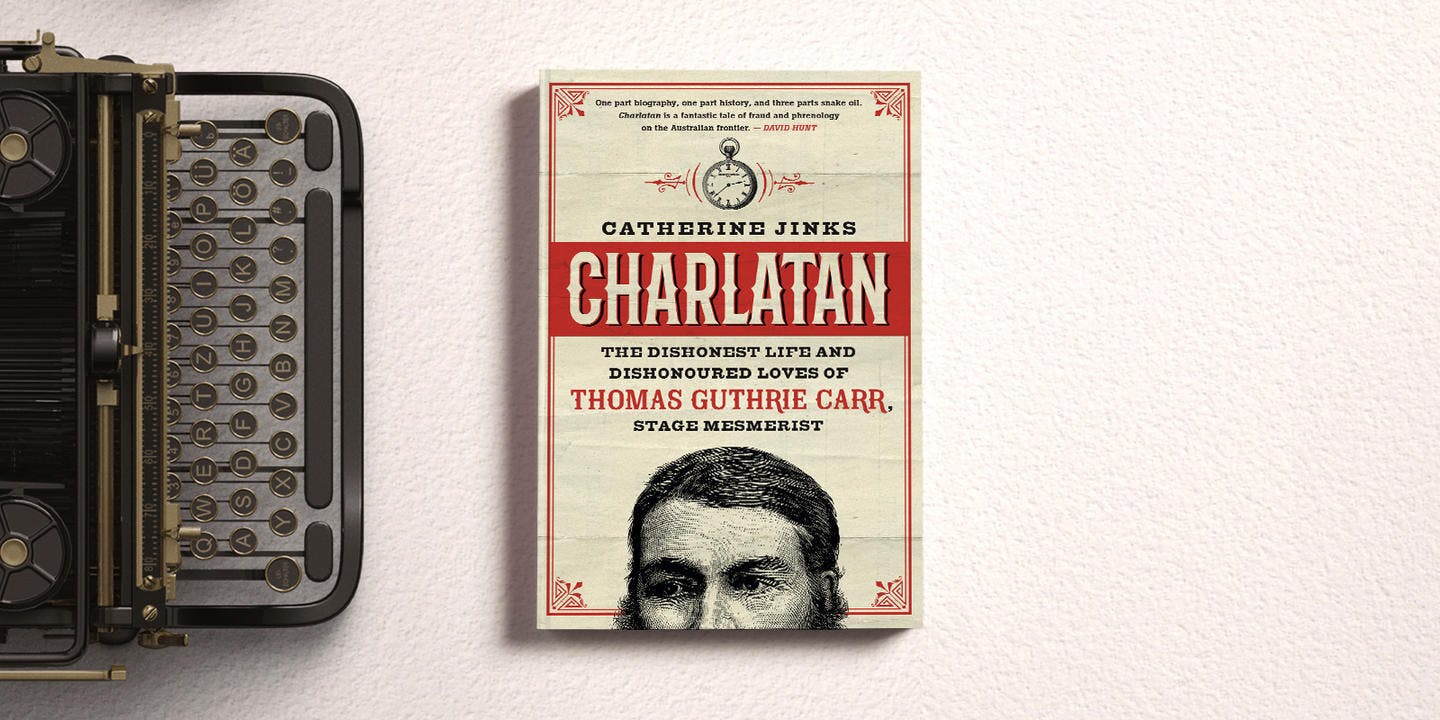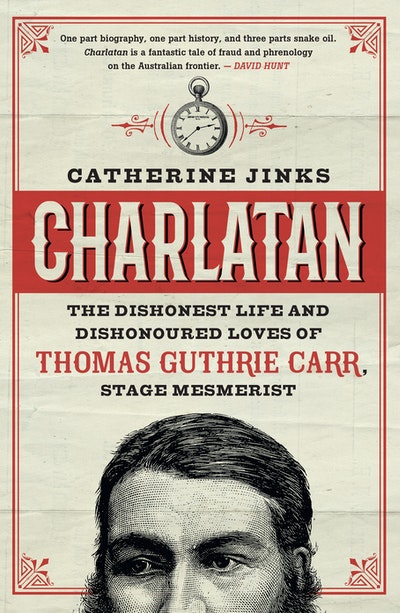Catherine Jinks hit the jackpot with Charlatan’s antihero Thomas Guthrie Carr.
I first stumbled across Thomas Guthrie Carr in a roundabout way, when I was trying to adapt my children’s novel, A Very Unusual Pursuit, into a screenplay. Further research was needed – historical research, because the novel is set in nineteenth-century London. I was poking about online, exploring the grisly subject of baby farming, when I discovered that back in the 1880s, a baby-farmer was operating out of Woollahra, in Sydney.
Baby farmers looked after children whose mothers were unable to take care of them. Domestic servants who ‘lived in’ were often forced to employ baby farmers. Some mothers paid a weekly or monthly fee, but for babies whose mothers paid a flat fee upfront, the outlook was pretty grim. The Woollahra baby farmer had eleven kids die on her in almost as many months, and she was charged with murdering three of them, though she was never convicted. One of the children in question was Elizabeth Cohen, whose grandfather, businessman Benjamin Cohen, had surrendered the child when she was less than a day old. He’d paid a nine-pound flat fee to the baby farmer, though there had been some haggling; originally, he hadn’t wanted to pay more than seven pounds.
The night before the inquest into Elizabeth Cohen’s death, Benjamin overdosed on morphine, and died. His family argued that he’d drugged himself to get some sleep, so it may not have been suicide. My interest was piqued by this case, because it had such a sinister cast to it – and when I began to look into Benjamin Cohen’s history, I discovered that he had a brother named Henry Cohen.
This was the same Henry Cohen who testified at Thomas Guthrie Carr’s committal hearing.
Naturally, I pursued Henry Cohen into the thickets of print covering Carr’s hearing – and, naturally, I became much more fascinated by Carr than I was by Cohen. I could hardly believe my luck. (A mesmerist charged with mesmerising a woman against her will and raping her? Was that even possible?) So I started to dig around some more.
When I realised what a fraud Carr was, and how many times he’d ended up in court, and how tireless he was in his self-promotion, I could see that there might be a book in him. Researching Carr was an absolute delight; I kept ringing my agent to say, ‘You’ll never guess what he’s done now.’ My default mode was: ‘You’ve gotta be kidding me’. He always did the wrong thing, and was then always caught out. That’s why, even though he was a liar and a fraud and a narcissist and irredeemably violent, it’s hard to banish a sneaking affection for the guy, if only because he was, in so many ways, such a hopeless klutz.
Unfortunately, Carr appears to have left nothing personal behind – no physical letters, no diaries, not even a photograph. His only (legitimate) daughter never had children. I was able to contact one of his wife’s sister’s descendants – a woman named Bev Giveen – but she admitted that the family didn’t have anything of Carr’s. So my research material was confined to his will, to various birth, marriage and death certificates, to a ‘phrenological chart’ drawn up for a client in New Zealand, to the lecture he had printed in England, and to endless articles and published letters that appeared in both the Australian and New Zealand press. Without ‘Trove’ and ‘Paperspast’, I would have been lost; these valuable services are undoubtedly national treasures.
When investigating the practice of mesmerism, I also had the delightful experience of visiting the Richard Bailey Library at the office of the Australian Society of Anaesthetists, in North Sydney. The librarian, Peter Stanbury, allowed me full access to the library’s enormous collection of books on mesmerism – and gave me coffee and biscuits as well. (If only all libraries were so civilised!) Needless to say, I additionally found myself poking around in the NSW State Library, where I browsed the excellent array of local histories and discovered relevant entries in publications like the NSW Police Gazette. Thanks to my State Library borrower’s card, I further secured access to a range of online newspaper databases, including one that yielded some information about Carr’s activities in Newcastle-on-Tyne.
It really is astonishing what you can find online, these days.
In choosing Carr as my subject, I was lucky to have picked someone whose life had been largely unexplored. He was very briefly mentioned in two books published back in the 1970s and ’80s, and his name also appears in a more recent work on mesmerism in Australia. But no one has exhibited much interest in him; he doesn’t even have a Wikipedia entry. I’m hoping that this sad situation will be remedied in the future, because Thomas Guthrie Carr deserves attention.
God knows, he worked hard enough for it.














